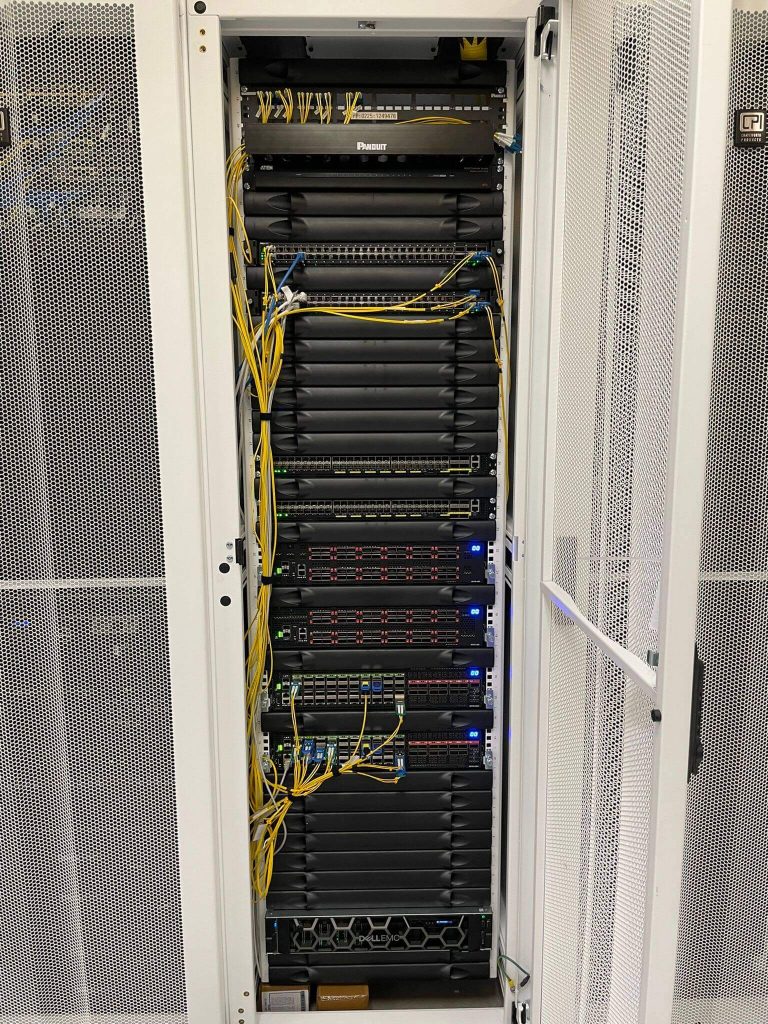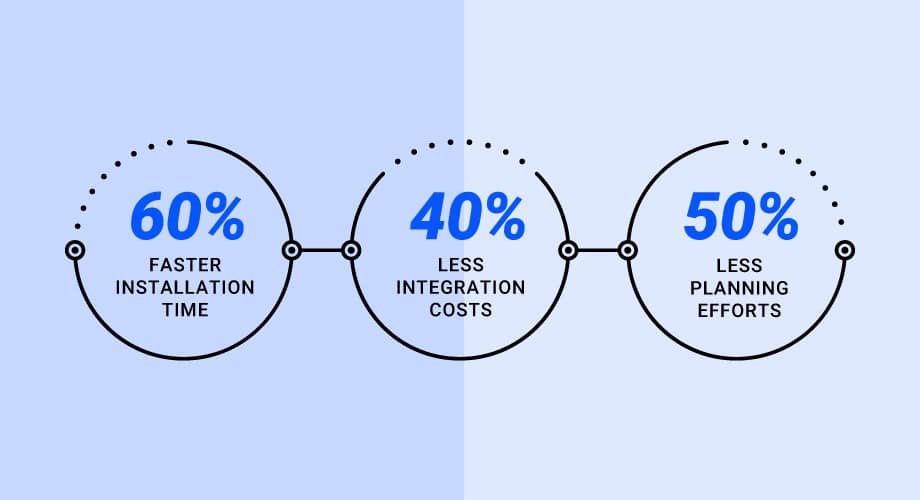DriveNets actively assists tier-1 operators worldwide in reaching their goals. Concerns about the complexity of new cloud-based models, including planning, sourcing, integration, installation, growth, maintenance, and support, are prevalent in the market. It’s time to share our hands-on experiences from the past few years, demonstrating the advantages of disaggregated, cloud-native networks as the future of networking.
Addressing Malfunctions on the Spot
addressed this issue within hours, maintaining excellent end-user experience.
Despite competitor claims of complexity, DriveNets’ software-based solutions are straightforward, even in troubleshooting. Misconfigurations, like the BGP issue, are quickly resolved by our routing expertise, significantly reducing operators’ maintenance windows and operational expenses.The Border Gateway Protocol (BGP) allows routing information exchange between autonomous systems through peering. Early on, during our Tier-1 service provider (SP) deployment, we encountered recurring BGP failures. DriveNets’ high availability and built-in redundancy in our Distributed Disaggregated Chassis (DDC) solution ensured no traffic drops, but identifying and resolving these failures was imperative.
Our team pinpointed the unsupported BGP community as the root cause. The rapid development and flexible architecture of DriveNets’ network operating system addressed this issue within hours, maintaining excellent end-user experience.
Despite competitor claims of complexity, DriveNets’ software-based solutions are straightforward, even in troubleshooting. Misconfigurations, like the BGP issue, are quickly resolved by our routing expertise, significantly reducing operators’ maintenance windows and operational expenses.
Risk-free Operations
In traditional networks, line card failure raises concerns about immediate replacement. Legacy monolithic chassis routers often risk whole chassis continuity during line card replacement. Despite claims of non-service-impacting procedures, SP usually perform replacements during maintenance windows to avoid risks associated with power distribution, airflow, and pin connectivity disruptions.
DriveNets’ Distributed Disaggregated Chassis (DDC) white box architecture separates the line card system for packet forwarding (Network Cloud Packet Forwarder – NCP) and fabric system (Network Cloud Fabric – NCF). Failure in any component doesn’t affect the cluster and can be replaced immediately, eliminating the need for scheduled maintenance windows. This approach has significantly reduced operational expenses for our customers and minimized the need for on-site spare inventory. The DDC architecture ensures no cascading failures, allowing for quick, risk-free component replacement. If there are any issues, they are isolated to their specific whitebox units, and as such, the blast radius is controlled.
In one of the SP networks running DDC cluster, we faced a hardware failure in the Network Cloud Fabric (NCF), requiring a return merchandise authorization (RMA). Thanks to the fully redundant nature of DriveNets’ disaggregated router model, the NCF failure did not impact router functionality or traffic forwarding. The new NCF was installed while the router remained active and fully operational, with no packet loss.
This seamless replacement contrasts starkly with traditional, hardware-based infrastructures, where similar issues might necessitate the complete replacement of the chassis, an expensive and time-consuming process.

Zero-Touch Provisioning Challenges
DriveNets Network Operating System DNOS, a cloud-native, distributed networking software built on containerized microservices, creates a unified, shared infrastructure. DNOS supports various service offerings, including routing – from core to access – and hosting for third-party services. All provisioning is done automatically through DriveNets Orchestrator DriveNets Orchestrator (DNOR). DNOR, a zero-touch provisioning network orchestrator – automates the deployment, scaling, and management of the DriveNets Network Cloud solution.
In one deployment, our zero-touch provisioning process identified an incorrect configuration due to an extra network interface controller (NIC) card. This issue, found across multiple sites and vendors, was promptly resolved by our Support and Operations team in coordination with system integrator partners, who removed the extra NIC cards and ensured correct hardware configurations at each site. This approach, identifying issues before deployment, ensures that our operating system isn’t loaded onto unsupported or unexpected hardware.
In another case, where several DriveNets clusters are deployed, we encountered a failure in one of the white boxes within a cluster. During the troubleshooting process, involving the hardware manufacturer, they discovered that the Solid-State Drives (SSDs) didn’t meet the endurance requirements for their network needs, indicating a hardware swap might be necessary.
At DriveNets, we took proactive steps. Believing in the importance of zero-touch provisioning and high reliability for network success, we updated our software and released a new service pack. This update altered how the drive is accessed and how data is written, effectively reducing the strain on the SSDs. It’s true that software and service pack updates are commonplace, but our cloud-native software and agile approach allowed us to implement these changes much quicker than traditional methods. Consequently, we significantly extended the meantime between failures (MTBF) for these units, well beyond the manufacturer’s original specifications, providing substantial benefits to our customer. This solution is risk-free, thanks to our distributed, containerized software.
Speeding Up Deployments
One of DriveNets’ advantages is the rapid deployment of networks. Our production Network Cloud clusters, installed globally, rely on generic, commercial off-the-shelf (COTS) equipment and whiteboxes. This allows local data center engineers to manage routine hardware maintenance without specialized training for specific hardware, leading to lower total cost of ownership and faster recovery times in case of malfunctions.
Recently, a U.S. customer requested an urgent network capacity increase. DriveNets shipped new whiteboxes overnight, which were physically installed and remotely configured by their employees within 48 hours, doubling the data center’s capacity.
Tackling New Technology Challenges
New technologies often come with challenges. DriveNets NOS, a modular and adaptable network operating system, simplifies network upgrades and evolution. It incorporates cutting-edge protocols to enhance customer networks, ensuring compatibility with legacy equipment and different protocol implementations.
In fact, at one time, resolved a multi-vendor incompatibility issue related to traffic engineering in record time. Every necessary change was provided and applied to the router within hours on the same day, demonstrating the power of a software-based NOS system’s adaptability and rapid response capability compared to traditional hardware based monolithic networks.
Taking Remote Management to the Next Level
A key advantage of our disaggregated router model is its capability to resolve many issues remotely, without the need for on-site intervention. In a recent situation, a customer faced a firmware issue in a data plane line card (NCP), disrupting connectivity and making in-band access from the cluster/router, managed by an incumbent vendor’s supervisor, impossible.
However, DriveNets’ disaggregated model includes independent console access to each router component. This feature enabled our team to remotely diagnose and fix the issue, bypassing the need for immediate, on-site support. Utilizing the console port of the NCP, we restored connectivity efficiently, drastically cutting down the time and operational expenses typically associated with such repairs. In contrast, traditional router models would have necessitated on-site intervention.
Show me the numbers!
Network development is not a straight path. Our goal is to be transparent, highlighting both successes and challenges in our customer networks.
DriveNets has been instrumental in helping operators transition to simpler, faster, and more cost-effective cloud-native network infrastructures. KGPCo, a leading network system integrator, confirmed this in a study based on their deployments of the DriveNets Network Cloud solution.

of DriveNets Network Cloud
The journey continues
It’s unrealistic to claim that network operations are always smooth. Challenges and problems exist in both traditional and disaggregated, software-based networks. DriveNets differentiates itself by being transparent about issues and addressing them quickly and effectively, thanks to our software-based, zero-touch provisioning solution.
But our journey doesn’t end here. Hands-on experience is a continuous process, and we are committed to evolving and improving our solutions. Stay tuned for more insights and advancements in DriveNets’ cloud-native network deployments.
Additional Resources for Distributed Disaggregated Chassis
Download White Paper
Which Network Architecture Is Right for You




